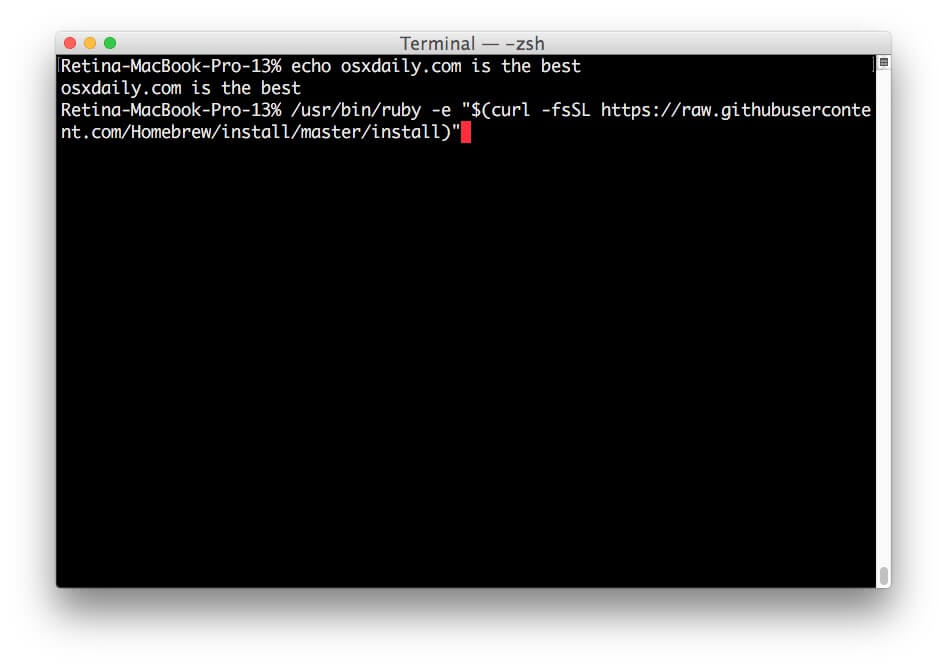

- #Homebrew for mac 10.13 how to
- #Homebrew for mac 10.13 for mac os
- #Homebrew for mac 10.13 mac os x
- #Homebrew for mac 10.13 install
- #Homebrew for mac 10.13 update
The issue I'm getting is with rosdep, it fails on a homebrew command: ERROR: the following rosdeps failed to install I know that MacOS is an officially supported OS, but it would be so nice if we can get this to work, because there are so many Mac users interested in leveraging ROS.
#Homebrew for mac 10.13 how to
#Homebrew for mac 10.13 update
If you are a mac user, start using Homebrew, because its' easy to use, manages the complete lifecycle of installations(search, download, install, update and remove) and it is free to use. If you have Homebrew installed in your macOS and now want to remove it for some reason, you can easily uninstall it by running the following command, You can even look for software packages available with Homebrew on the Homebrew Formulae webpage. Start using these command and your life will become so much easier. NOTE: Here name-of-the-package will be the name of the utility you want to search for. Using Homebrew you can easily search, download, updat and remove open-source utilities, libraries etc that you need for your local development.

Using Homebrew to Install Software Packages(Open-source Utilities) To activate the changes made to the bash_profile file, type: Then you can exit the nano editor by pressing the control key and the letter X together. To save the file, once you have added the above line to it, press the control key and the letter O, then press the Enter key. Open or create the ~/.bash_profile file using nano editor:
#Homebrew for mac 10.13 mac os x
You must be wondering, why we need to do this? Well, to ensure that the Homebrew installations(software packages installed using Homebrew) are given priority over the default Mac OS X tools selected by the OS. Once the installation process is done, we will now put the Homebrew directory at the top of the environment variable PATH in our system. This will inform you about the status of Homebrew and will ask you to update a few packages, if required. Run the following command to see if everything is installed fine. Once this command executes without error(if you get any error, post in comment and we will help you out) Running this script requires password, so when it asks for the password, provide your user passowrd and press "Enter" To install Homebrew, run the following command, The above command will install command line tools in your computer, or if you already have that installed, it will show the message "error: command line tools are already installed". To install Command Line Tools, open your terminal(Press Command Spacebar and type in "Terminal" to open the Terminal App) and run the following command. If you have XCode installed on your local environment then you do not need to do anything and can directly jump to the next step. To install and run Homebrew on macOS we need to install Command Line Tools on our mac. Homebrew installs the packages inside this directory, or at times, it installs the packages in their own directory and then symlinks(create soft link) their files into /usr/local/ directoryīelwo we have a step by step guide to install Homebrew on your computer/laptop Whenever we install a new software package or tool, it should be installed in the /usr/local directory, as this is the directory where user specific software packages are installed.

Install software packages required for setting up local development environment in your macOS.Now to run/execute these scripts you will have to install python in your local computer, again, how will you do that? If you are a mac user, you can use Homebrew.
#Homebrew for mac 10.13 for mac os
Homebrew is a software package manager for Mac OS which can be used to install required packages, libraries etc to setup your local development requirements.Īnother example, if you decide to learn Python, how will you do that? You will use online tutorials to learn the basics of the language and then practice by creating small programs/scripts in python. Also during development, you will have to install these packages in your local computer too. For example, if you develop a web application in Java using Jax-RS API like: Jersey, RESTeasy etc for REST services, then to run this software you must install Java and the other libraries/APIs used on the server. When we develop a production software(like, eCommerce website, or an SaaS) it's never just one programming language that satisfies all the requirements, and we end up using various libraries and software packages, which we must install on our server for the software to run.


 0 kommentar(er)
0 kommentar(er)
